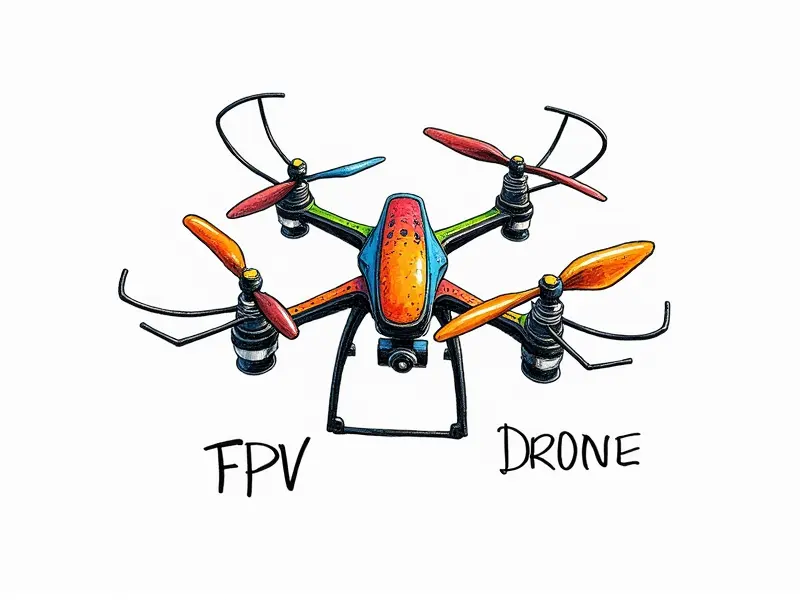FPV drone frame sizes

Best FPV Drone Frame Sizes Explained
When it comes to choosing the right FPV (First Person View) drone for your needs, one of the most critical factors is frame size. The dimensions of an FPV drone not only affect its performance but also influence aspects such as camera quality and flight time. This article will guide you through understanding different frame sizes and their implications.
Choosing the Right Size for Your FPV Drone
Selecting the appropriate frame size is crucial for achieving optimal performance in your FPV drone. Factors to consider include:
- Purpose: Are you racing, filming, or just flying for fun?
- Battery Capacity: Larger frames typically offer better battery life.
- Flying Skills: Smaller drones are easier to handle but require more precision.
Small vs Large FPV Drone Frames: What's Best?
The choice between small and large FPV drone frames depends on your preferences and intended use. Small frames (< 150mm) offer agility and maneuverability, making them ideal for indoor flying or tight spaces. Conversely, larger frames (over 300mm) provide better stability and payload capacity, suitable for outdoor racing and filming.
Optimal Frame Sizes for FPV Racing Drones
Racing drones typically benefit from mid to large frame sizes due to their need for speed and maneuverability. Commonly used frame sizes include:
- 250mm: Compact yet powerful, ideal for beginners.
- 300-400mm: Balanced performance with good stability and speed.
Compact vs Full-Size FPV Drone Frames Compared
Compact frames (< 150mm) excel in agility but may lack battery life, whereas full-size frames (over 300mm) offer extended flight times and robust build quality. Here’s a quick comparison:
| Compact Frames | Full-Size Frames | |
|---|---|---|
| Agility | High | Moderate to High |
| Battery Life | Short (5-10 mins) | Longer (10+ mins) |
| Stability | Moderate | High |
How Frame Size Affects FPV Drone Performance
The size of an FPV drone frame directly influences its performance in several ways:
- Speed and Agility: Smaller frames are faster and more agile.
- Battery Capacity: Larger frames can accommodate bigger batteries for extended flight times.
- Camera Quality: Frame size impacts camera placement, affecting field of view and stability.
Top 5 FPV Drone Frame Sizes for Beginners
If you're new to FPV drones, these frame sizes are excellent starting points:
- 130mm: Perfect for indoor flying and learning.
- 250mm: Balanced performance with good battery life.
- 300mm: Great stability and speed for outdoor racing.
The Impact of Frame Size on FPV Camera Quality
The frame size can significantly affect the quality of your FPV camera. Larger frames often provide better support for high-quality cameras, offering superior image stabilization and field of view:
- Stability: Larger frames reduce vibrations, improving video clarity.
- Field of View: Wider angles can be achieved with larger frame sizes.
Maximizing Flight Time with the Right FPV Frame Size
To maximize flight time, consider a frame size that balances agility and battery capacity. Larger frames generally offer longer flight times due to their ability to house bigger batteries:
- Battery Capacity: Opt for larger frames if extended flight duration is crucial.
- Weight Management: Ensure the frame size matches the weight of your components for optimal balance.
Mini vs Micro FPV Drone Frames: Which to Pick?
The choice between mini and micro frames (< 100mm) depends on your flying environment:
- Micro Frames (50-90mm): Ideal for indoor flying, tight spaces.
- Mini Frames (90-130mm): Suitable for both indoor and outdoor use, offering better battery life than micro frames.
Optimal FPV Drone Frame Dimensions for Racing
To excel in FPV racing, consider these dimensions:
- Frame Size: 250-300mm offers a good balance of speed and stability.
- Fuselage Design: Aerodynamic shapes reduce drag for faster speeds.
Conclusion
Selecting the right FPV drone frame size is crucial for achieving optimal performance, camera quality, and flight time. Whether you're a beginner or an experienced racer, understanding how different sizes affect your drone's capabilities will help you make an informed decision. Consider factors such as purpose, battery capacity, and stability to find the perfect fit for your needs.

